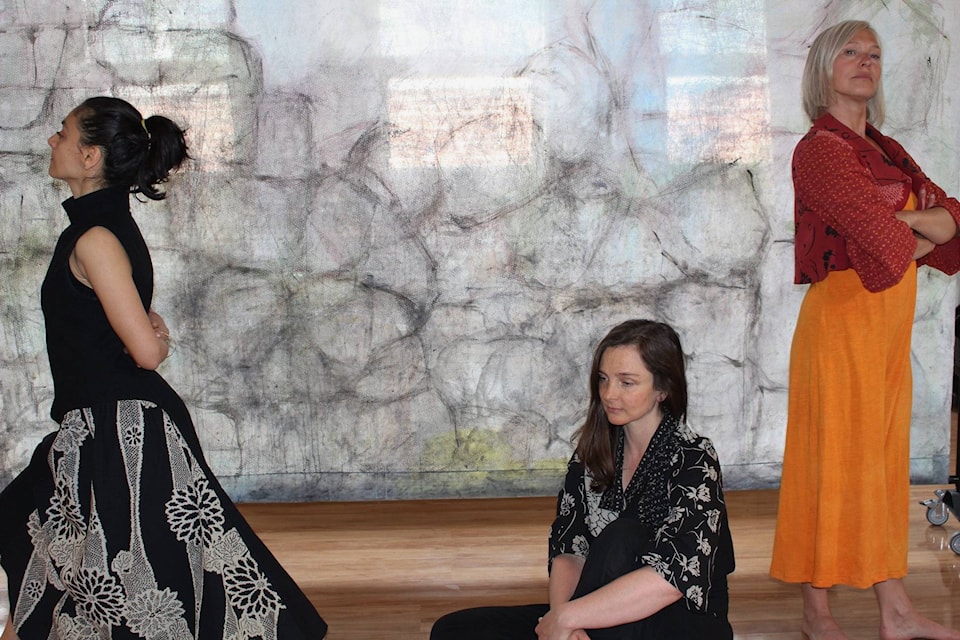Submitted
What is a human border? That which defines us as human beings? Or is it a line which delineates us as separate from one another, or from our environment? Does a border express freedom or limitation? If it’s both, can we tolerate the ambiguity of both truths operating at the same time?
These are among the many curiosities the dance theatre production of Human Borders playfully focuses upon. How we navigate ourselves in life exists on a spectrum through literal concrete ideas as firm as a wall and as abstract as a poetic metaphor. One is hard and definite while the other is elusive and fluid. This extends to how we relate to conflict and find resolutions, how we relate to change.
We cannot escape the sense of dichotomy borders highlight: Intention and Action, Living and Dying, Dreaming and Waking. The contrast of this relating to that is a short hand perspective we find hard to resist. It is more challenging to relate to the border zone of ‘in-between-ness’, the both/neither within the spectrum. This invites us to the edges of familiar space like the border zones at the periphery of a country where change happens.
Throughout the dance theatre production Human Borders, this transitional space is explored through the ‘felt sense’ of body language, modern, improvisational, and contact dance techniques. The language of the musical score also helps weave the abstract narrative of the production. Contemporary classical guitar acts as a foundation for further guitar experimentation and found sound resulting in a unique qualitative soundtrack. The work of classical guitarist Patrick Lussier who lives and performs in Winnipeg is highlighted.
Aesthetic portrayal of identity through clothing plays a key role in the work in terms of ‘in-habiting’ our identity. However just as the borders of personality can be relatively nebulous or fixed, like the fruit that cannot be eaten until the peel is removed, so, too, must we be capable of removing our psychological garment to partake in the reality of our experience.
Costume pieces are by Japanese Canadian designer Terry Sasaki of Vancouver.
Human Borders is an original conception of Lynn Dragone who has been teaching making movement performance work in the Kootenays for a three decades. Her study as a movement analyst, a meditation teacher in the Buddhist tradition and work in abstract Sumi brush work has contributed to her outlook and shaped her choreography and direction of this project. Joining her on stage are three dancers who also reside in Nelson and have an eclectic background in acting movement arts.
Now, with the benefit of major arts funding from the Kootenay Columbia Cultural Alliance, Human Borders will be performed in Nelson on Saturday, June 15 and Wednesday, June 19 at the Shambhala Performance Hall. All performances begin at 7:30 p.m. and run approximately 75 minutes.
